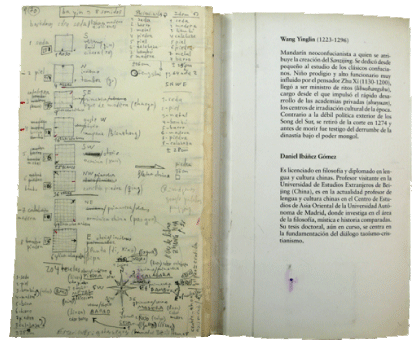。bā yīn 八音 。8 sounds 。
。sonorous paintings project 。
- about 。项目
- | concept 。理念
- | formats 。格式
- | conferences 。会议
- | email 。电子邮件
- | links 。链接
- | download 。下载
- | sitemap 。 网站地图
-
approach
Chinese music has its very special characteristics. As almost everything in China, music is not an isolated phenomenon in their culture but rather a contextual phenomenon in main relation with all aspects of life: emerging therefore a particular kind of cosmogony. 8 sounds-bā yīn 八音 were institutionalized in the beginning of seventh Century B.C., being one of the first concepts of this kind in the world. While the rhythm and melody were well developed in other musical cultures, China took the lead on timbre or tonal color of music, which has been enunciated by the sophistication of Chinese music. For Chinese, very sensitive to the perception of energies and subtle resonances. Timbre is the SOUL of music. Therefore, a piece of music will become a different one if its nstrumentation is altered.
。1-Gourd timbre (Northeast, between winter and spring, gèn 艮 ) is equivalent to Chinese mouth organ: shēng 笙 and yú 竽。
。2-Clay timbre (Southeast, from summer to autumn, kūn 坤 ) has as better representation the okarine: xūn 埙。
。3-Skin timbre (North, winter, black, water, kǎn 坎 ) is perceived with drum: gǔ 鼓。
。4-Wood timbre (Southeast, spring/summer, xùn 巽 ) is equal with clapper wooden tiger: yǔ 敔。
。5- Stone timbre (Northeast, between autumn and winter, qián 乾 ) is pronounced in the stone chime: qìng 磬。
。6-Metal timbre (West, autumn, white, metal, duì 兌 ) is a twin with the bell chime: biǎn zhōng 扁钟。
。7-Silk timbre (South, summer, red, fire, lí 離 ) it appreciate in the lute: qín 琴; and zither: sè 瑟。
。8-Bamboo timbre (East, springtime, green, wood, zhèn 震 ) is recognize by the flute: dí 笛, xiāo 箫; and pipa: pí pa 琵琶。
Based on the information gathered from this field work, we propose the performance of a series of “sonorous paintings”.
。concept 。approach 。 structure 。 pieces 。method 。plans 。txt 。
-

